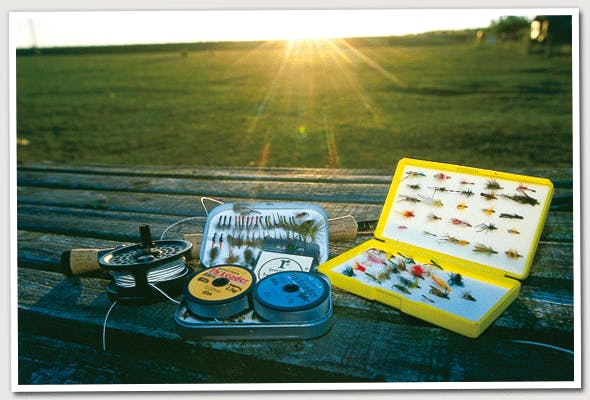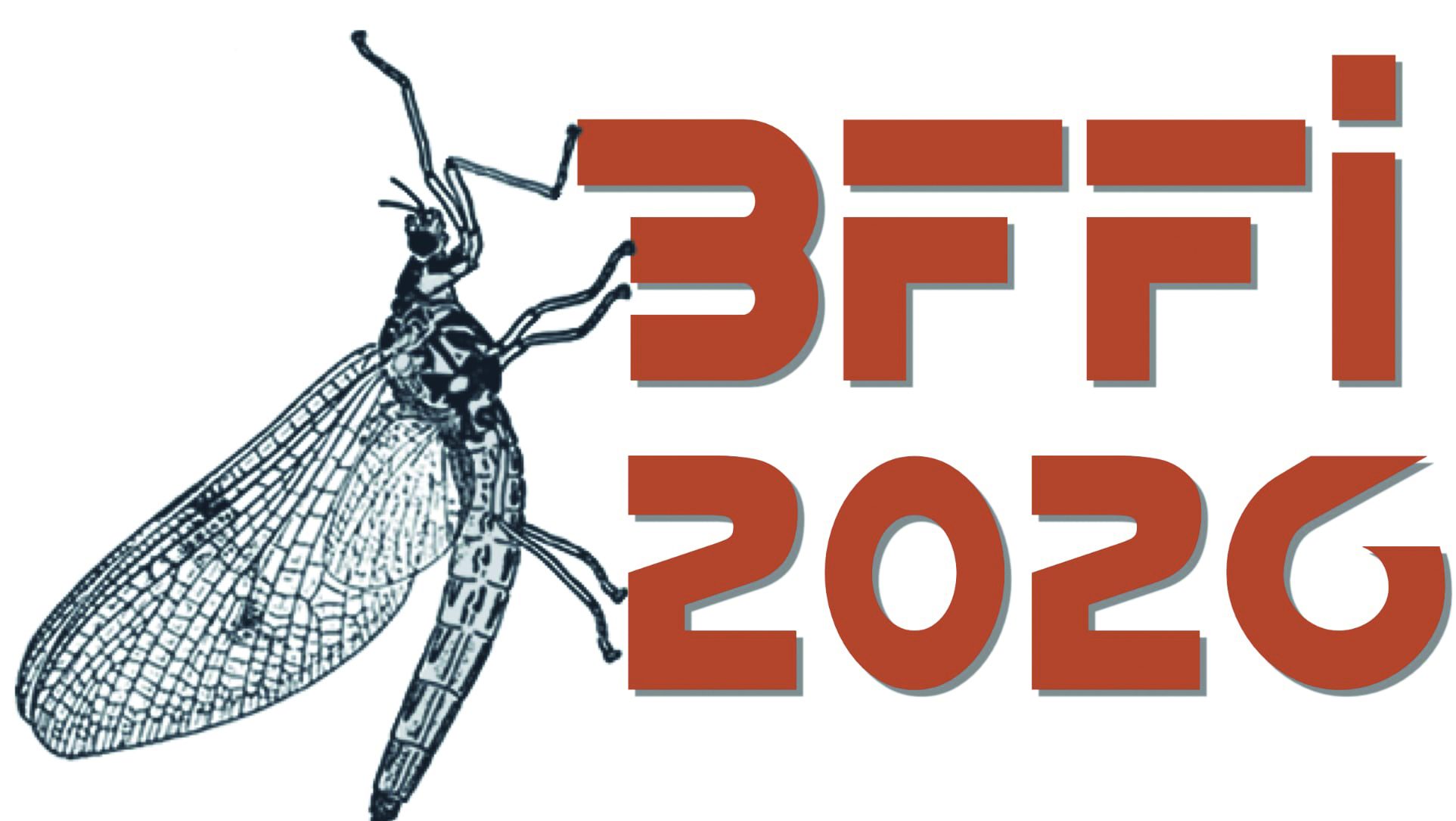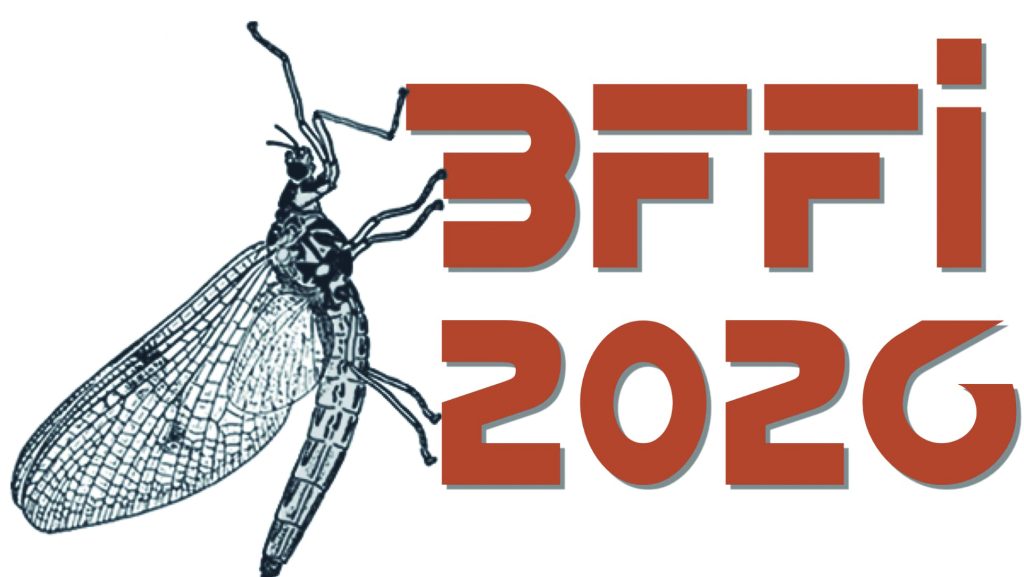THE ESSENTIAL GUIDE TO SEDGES
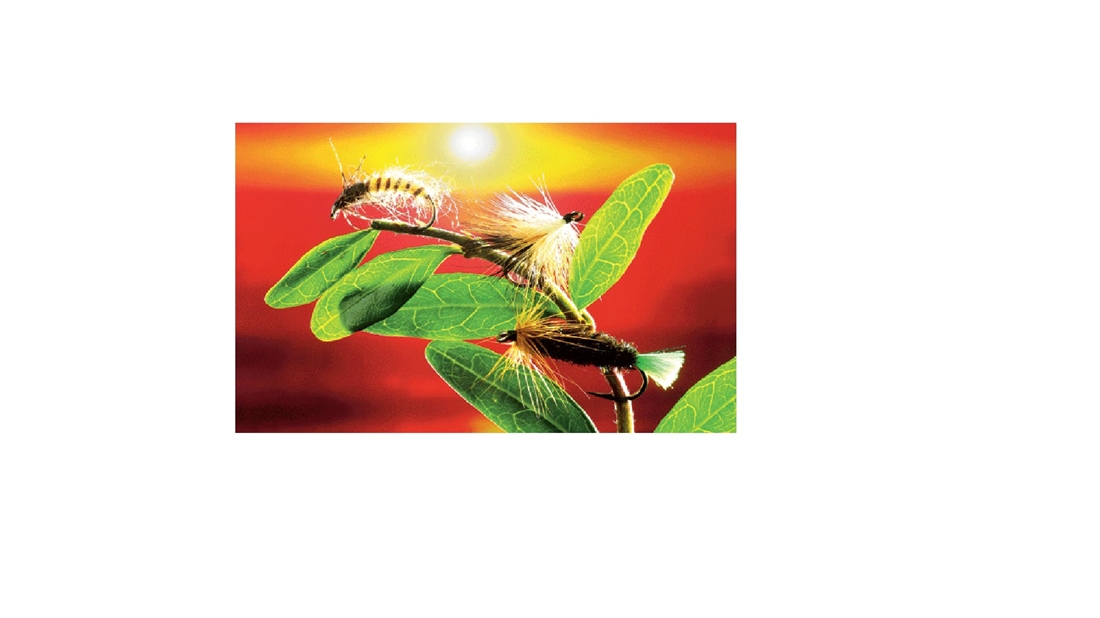
SEDGES belong to the group known as Trichoptera and at rest their wings are folded to form a roof, or tent, shape. It’s easy for beginners to sometimes confuse them with moths but the sedge’s wings have a covering of tiny hairs, whereas moth wings are coated with scales which tend to rub when held in the hand.
Also assuming a similar profile to sedge, it’s easy to mistake the adult alder fly as a resting caddis. Apart from being present far earlier in the season than most sedges, a quick glance at the alder fly will reveal unmistakable heavily-veined wings. We commonly refer to the order Trichoptera as “sedges” or “caddis” and I’m happy with either of these terms. After hatching from the egg, caddis have three stages within their life cycle that warrant our attention as fishermen. The larval stage, pupal stage and finally the winged adult and, whilst the upwinged flies undergo a final transformation on land from dun (sub imago) to spinner (imago), the returning egg laying sedge is still of importance
THROUGHOUT winter and spring sedge larvae (cased caddis) are busy developing in purpose-built protective shelters. Their cases are formed from pebbles, small sticks, reed stems and other vegetation. As the larvae grow they either extend their tube-like homes or look for a case which has been vacated by a larger grub. Only too aware of these protein packed goodies, trout can often be found predating heavily on them during early season. Although our focus this month will be the sedge pupa or winged adult, it’s worth a brief look at the tactics for spring trout.
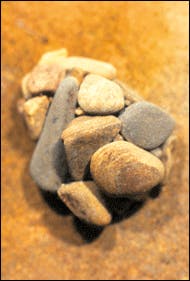
THE LARVAE
The fact that these grubs build houses out of stones, leaves and all manner of things then crawl slowly, instead of swimming, means they’re not the easiest of things to imitate. Having said that, some patterns fished just off the bottom or even midwater have proved successful.
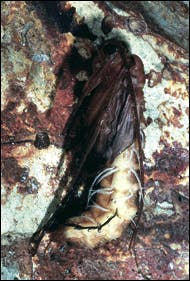
THE PUPAE
With strong paddling legs, sedge pupae are active swimmers. So the rise forms of pupa-feeding trout are often splashy. They come in three main colours – amber, pale green and a dirty white, but mostly amber or green. At the water’s surface, the thorax splits so the adult can emerge.
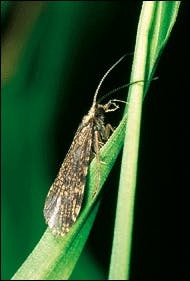
THE ADULT
Mostly various shades of brown in colour, the adults vary in size from 5mm to one inch – the largest UK species! Adult sedge rarely sit still but skitter across the surface – their wake often attracting fish. So, imitations must be twitched or allowed to drag to mimic this movement.
THE ‘MOBILE HOME’ STAGE
Clambering about the lakebed, carrying a home on their back, cased caddis really don’t appear that exciting, so imitating might seem difficult. Oddly, once trout get tuned into them they will often take items of a similar profile that are not always found at depth. Many times I’ve spooned trout that have been feeding on cased caddis and there, alongside the many caddis larvae, have been things like twigs, reeds and alder catkins which aren’t known for their sinking properties. Taking confidence from this we can feel a little happier that our flies don’t have to exactly mimic the natural’s behaviour. Though we should always strive to be near the mark.
I do best fishing a floating line and long leader with two cased caddis representations positioned all of 3ft apart. Using sinking tapered leaders or even a sinktip will also help to attain depth. Giving the best of both worlds during early season there’s merit in fishing a caddis pattern beneath a couple of buzzer pupae. That said, tying up a more buoyant fly to be presented Booby-style on a short leader and fast sinking line also has merit. This is a good tactical ploy during windy weather when long leaders prove difficult to control or when extremely cold conditions prevail.
SEDGE PUPAE
As the season progresses, caddis larvae mature to eventually pupate within their case. In contrast, armed with hair-fringed paddles, sedge pupae are much more animated, making for the surface with an impressive turn of speed. As many of the species emerge in open water, this journey obviously exposes them to trout and for my money provides us with the cream of sedge fishing. Although we look to summer evenings for the best of our sport, once caddis hatches get underway, there are times when emergence can take place from late afternoon onwards. Coming off in dribs and have the intensity of a full blown evening hatch, they are often of significance to keep trout interested.
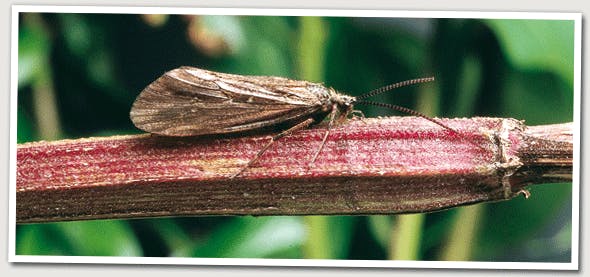
TACTICS FOR THE PUPAE
If you arrive early and things are in full swing, all well and good as we can look to offering the trout our surface flies. More often the water will look dead, especially during a prevailing heatwave. This can restrict any decent action to last knockings, though, if you are confident that sedges have been coming off for a few days now (a quick check in nearby spider’s webs should hold a few clues) it’s worth fishing a couple of pupa patterns at depth. Where conditions allow (not too breezy), aim to fish as long a leader as you can manage. I start with one of 18ft and place two weighted nymphs 3- 4ft apart, though this will be quickly revised given a nasty, swirling wind. Look for a crosswind blowing left-toright (right-handed caster). Not only aiding casting, it ensures the nymphs are worked back on a sweeping path as our floating line forms a seductive curve in the appreciable wave.
MEND LINE FOR EXTRA DEPTH
To achieve a little extra depth try to execute a line mend into the direction of a coming breeze. This can prove difficult with longer leaders when using a weight forward taper as the thin running line struggles to transfer sufficient energy along a lengthy line. I’ve found that an aerial mend is much more effective which takes place following the “tap” of the forward cast. Having stopped the rod at our usual position, gently sweep the rod a little way to the side in the direction of your required mend and then bring it back to its original plane. This all takes place as our line unfolds over the water and before the flies alight. Firstly, don’t panic, the action is more relaxed than you think and, secondly, try to keep the movement smooth and gentle. Most first timers yank the rod over too abruptly which generally results in pulling the whole line back to land in a tangled heap. Best to practice this on grass first, with a short length of line, however, if you want to perfect this then it’s best to book a lesson with a registered A.A.P.G.A.I. member.
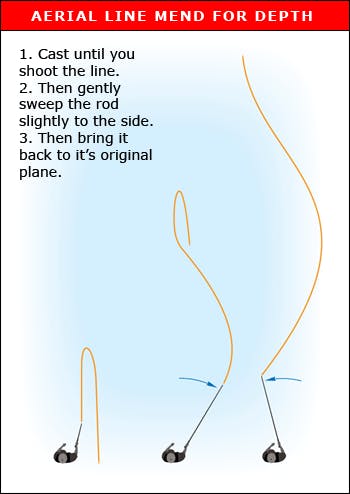
RETRIEVES
Having cast out with or without a mend, allow time for the nymphs to descend. Sometimes taking a couple of minutes and with a bowing line, a steady draw on the line makes everything taught before our retrieve starts properly. Remember that continually pulling the line is going to lift our flies from their desired path. If you prefer to draw the line back then allow plenty of pauses between pulls, almost fishing the flies sink-and-draw at depth. For me it’s a figure-of-eight retrieve and after a short burst of say 4-6 turns of the hand, rest to let the flies settle. Although not your classic sedge fishing, often bagging you a trout or two, this little ploy instills confidence before the anticipated main event.
SURFACE ACTION
As the evening wears on it shouldn’t be long before adult sedge can be seen fluttering about and hopefully the lake begins to erupt with healthy rise forms. It’s easy to think that these fish are targeting adult sedges though at this early stage they’re more likely to be homing in on ascending pupae. As trout do this at speed, having intercepted an unfortunate pupa, they continue along their path of motion, frequently breaking surface or causing a commotion in spectacular fashion. Signalling the start of some electric sedge fishing I’m often a fumbling wreck as I prepare for this next stage!
With sedge fluttering all around and the odd one even colliding with you, it’s time to shorten up that leader now to some 10ft. Unweighted flies, presented high in the water are our objective, so select flies that are scruffy and busy looking. Apart from possessing appeal their greater surface area helps hold them in the zone for longer. With explosive rise forms and fish bulging beneath the surface it’s as well to hold the rod tip a little clear of the water to offer some form of tippet protection against savage takes. The confusion of rises can make targeting an individual trout difficult, so place a cast in the general area. Giving you the best of both worlds, attach pupa patterns off droppers with a larger, buoyant dry on the point to help suspend them (see below). Though, if using a retrieve, apply sinkant along the leader to prevent any nasty leader wake.
Trout feeding on caddis pupae usually pounce on them quickly. Many times I’ve seen fish come hurtling out of the water just as the flies have alighted, so be prepared.
Start the retrieve almost instantly and again it’s a short figure-of-eight burst, interspersed with plenty of pauses. Unlike the trickle hatches that can last from late afternoon and into the evening the action tends to be intense and short lived. In Cumbria you’re looking at a window of maybe an hour with anything more considered a bonus. With this, it’s worth carrying a spare rod in case of tangles or, at the very least, carry a couple of pre-tied leaders.
WINGED ADULTS
In a bid to make cover, winged adults buzz across the surface and the trout aren’t far behind. Hackled dry flies treated with floatant that are slowly worked through the surface can be deadly now. And, just for back-up, I attach a pupae pattern, trailing some 3-4ft behind this (see diagram below).
If fishing a more static dry sedge, I tend to use smaller, slimmer flies to imitate naturals. Sedges are quite delicate flies and in my area the dominant species are grousewings, brown silverhorns along with a few cinnamon sedges. The first two can be copied on size 14 hooks with a size 12 perfectly matching the slightly larger cinnamon sedge. However, sometimes it’s vital to impart disturbance into our flies and this is best done by increasing the size, especially during breezy conditions. As a rule the harder the blow the larger the fly, remember too that fish tend to be braver under darkness when, on occasions, I’ve found success using size 8 palmered sedges. That said: weather patterns usually see the wind drop at evening time, resulting in calmer water.
Trout quickly turn their attentions to stillborn or feeble adult sedges now, which is when dry flies really come into their own. Fish mopping up stillborns and the like generally do so in a subtle manner. Smaller, delicate flies work best now, a favourite being the Elk Hair Caddis (without a hackle). Staring into the gloom, it can be difficult to locate a rise, try crouching low and looking across the surface rather than on to it. Hopefully, you’ll soon begin to pick out those telltale signs as the surface film rocks every so often. This is single fly territory and rather than fish it static, introduce the slowest of retrieves. Keeping in touch with the fly we can now rely on touch rather than sight for takes.
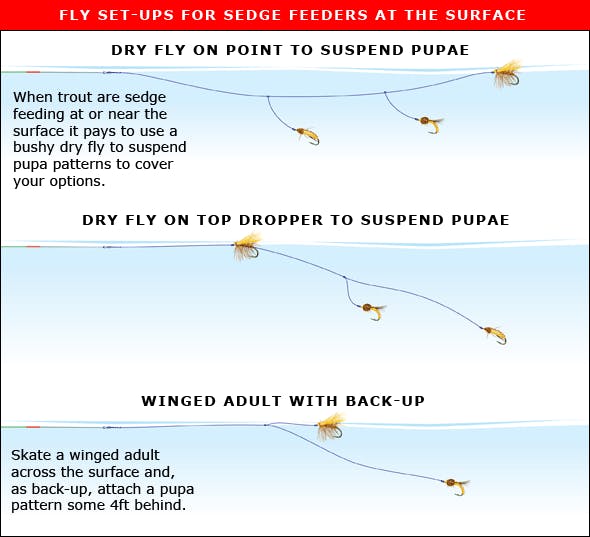
MORNING SPORT
Summer mornings can also produce excellent sport to sedges. If conditions have remained still overnight then there’s a good chance that casualties or egg-laying females will still be trapped in an oily looking surface from the previous evening’s action. On many occasions I’ve come across fish confidently sipping down these flies at first light. Again, faced with a light breeze, females have been known to venture out and deposit their eggs at such times.
Undisturbed, trout can be found right in the margins now, so tread carefully. For targeting these risers a single fly is my choice with either a stillborn or olive/pale yellow Shipman’s being particular favourites.
Crouching low, it’s surprising how close these fish can be approached. As such, short casts are the key. Remember to check the reel drag before starting, as trout hooked in shallow water often use speed as their primary defence. Following the struggle other fish may stop feeding for a short while, but as long as you remain still they usually return. Good luck with your sedge sport!
